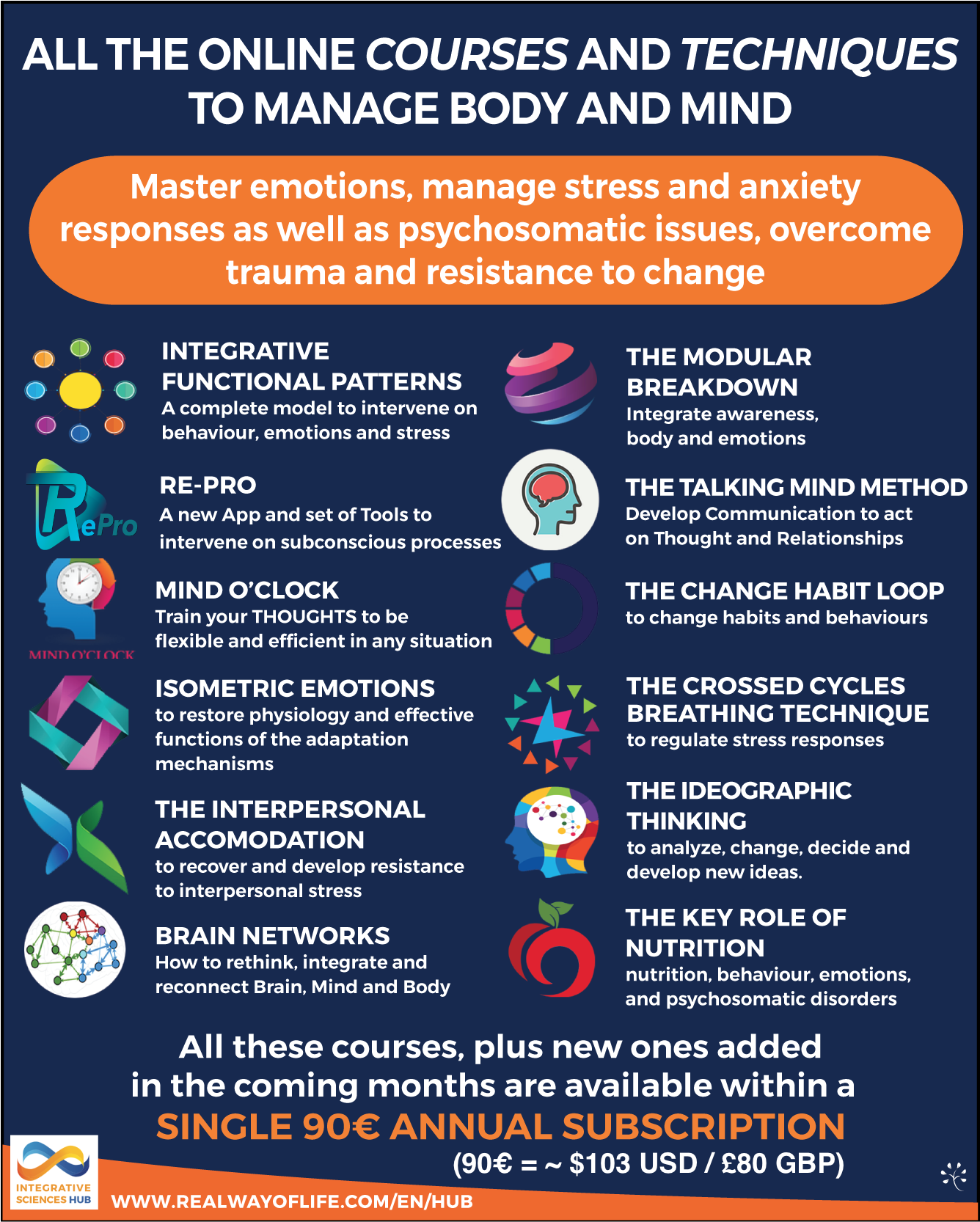
15 Oct Managing interpersonal conflict and ruminating: how to work with your clients – Applied Integrative Sciences #2
In this article we continue a series of practical case studies [case 1: Anxiety and Psychosomatics] to understand how to work in practical terms and get the most out of the Integrative Sciences and its schemes, models, techniques and application strategies.
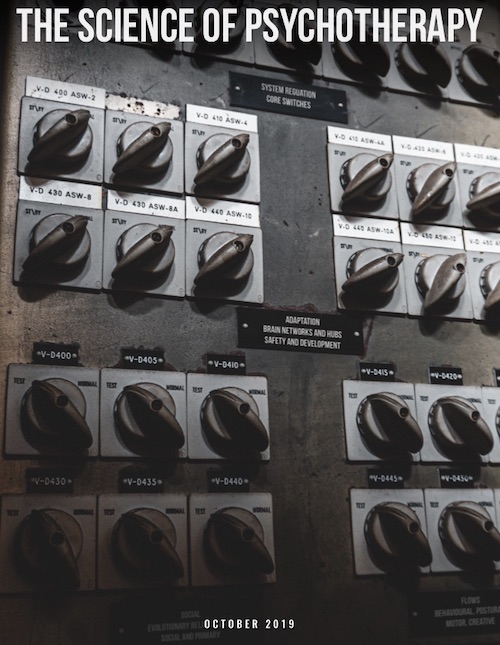
Let us look at another example. This time we will use the Functional Integrative Patterns as our guide. As previously mentioned, we will be working on the process of analysis and intervention on different phases of activation of a specific type of behaviour as they identified on the basis of the mental processes and related underlying neurobiological links.
This second case study is featured in The Science of Psychotherapy magazine (October 2019), you can download a copy from this link or read the article below.
CASE 2
Let us take the example of a young woman who tends to easily enter into conflict and spends a lot of time stuck in ruminating thoughts.

We may analyse together the latest argument she had.
Using the Functional Integrative Patterns we can identify whether the dysfunctional aspect in the argument is formed, for example, in the incorrect interpretation of interpersonal and contextual cues, in difficulties or resistance towards introducing new information into existing mental structures and ways of representing reality, or in the prediction of how things will work out that is independent and totally autonomous of data derived from reality and specific context.
All these processes take form in the Prediction, Detection, Labelling and Evaluation phases in a crescendo of phenomena that go from being totally beyond our level of consciousness towards increasing awareness and finally become partially manageable according to our own volition.
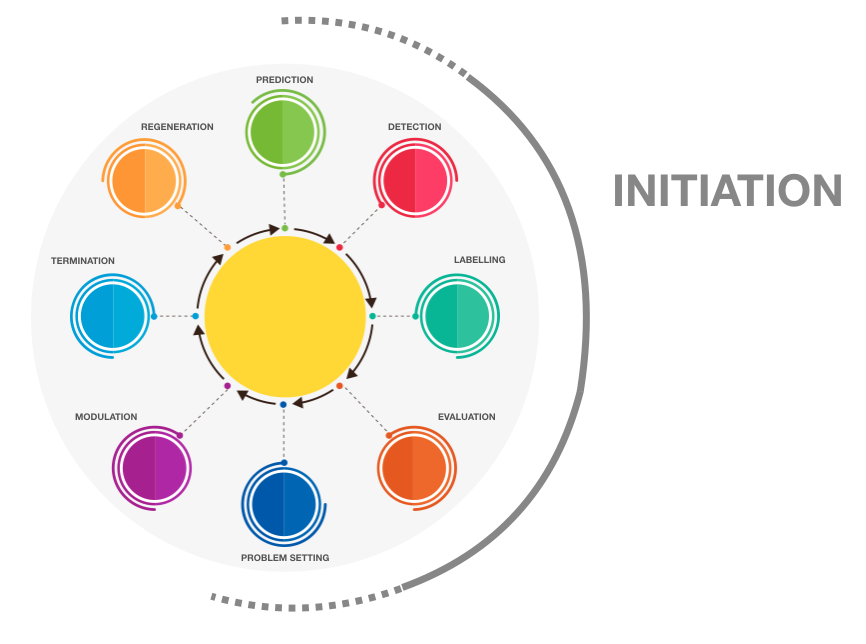
ACTING ON THE INITIATION PHASE
In these cases we can take various routes:
- We can use visual and graphic representation to introduce new information and make it salient by promoting perception and integration of the latter with the specific point of view through the Ideographic Thinking technique for example;
- A feature that all people that do not take new information or points of view into account share is an excess of glutamate in their neurons. This feature can easily be controlled through nutrition;
- Reboot techniques are an interesting way of forcing a new correct evaluation of reality, by-passing negative predictions and automatisms. These techniques provide incoherent and unnatural stimuli to the perceptual system (i.e. hot and cold at the same time) and thus oblige it to reprocess incoming sensory data in the same way we reset our computer pressing Control-Alt-Canc.
SHARING, VIDEOS, TECHNIQUES AND DESIGN
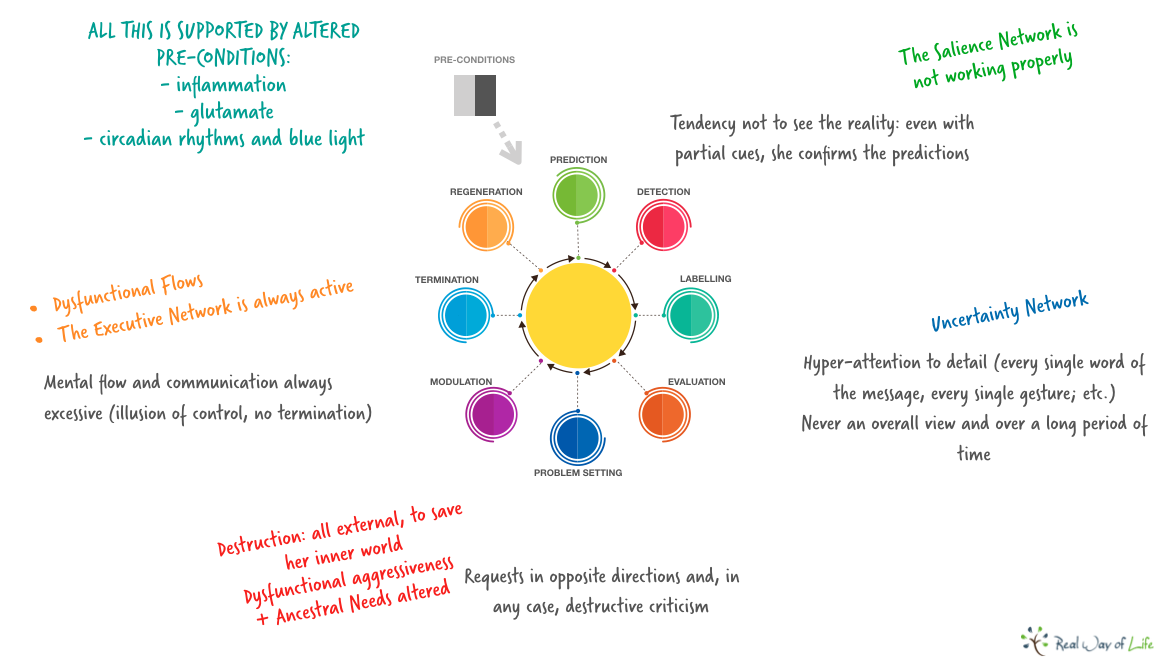
Worksheet example 2
As you can see this is a practical system that is shared with the patient. We use a series of worksheets that illustrate the different phases and their sub-sections and the patients take these home as aide-memoirs that enable them to fully understand what is happening and provide further elements for thought and reflection.
In addition to the work carried out during the sitting it is useful to use video or in the field observation when the environment allows it (such as a verbal conflict during a presentation).

For the patient analysed for example, it was critical to see herself in a video arguing at the playground with her daughter so she was able to analyse each functional and dysfunctional element in herself and in the interpersonal dynamic (dominated by a lack of trust and attempts to impose power).
Observation and analysis of behavioural dynamics or of other flows (communication, creative, postural etc.) only represent the initial phase. At a second stage, active experimentation and the application of new behavioural and interpersonal patterns can take place. As per our model we are now in the Modulation phase, where behaviour takes form.
At this stage, provided that earlier and later phases are managed correctly, it is possible to enact some very effective transformative experiences. In order for these to work it is necessary to isolate the specific processes that you want to work on. These can be easily identified via the sub-sections of the Functional Patterns or via the Switches (by blocking initial defence automatisms or isolating the Uncertainty Network or interpersonal challenge processes for example).
The other critical element is attention to sequences and activation times (this is the reason we call this process HXD: Human eXperience Design), in order to make the most of all the neural plasticity, reconsolidation and epigenetic transcription phenomena that are at the core of effective and lasting change.
I have never been a big fan of role playing as a psychotherapist or trainer. These exercises are certainly useful to get used to the basic principles, but there is always an aura of acting and detachment because people know they are ‘pretending’. Via HXD we work on real-life experience which is realistic by definition and, thanks to planning and attention to detail, can provide positive transformative experiences.
FROM TERMINATION TO DEVELOPMENT
Let us look at another area where Integrative Functional Patterns can be useful.

We have said that this patient tends to ruminate so the argument with the other person ends in real-life but continues for hours in her mind.
We need to remember – and to remind the patient – that every behaviour we enact has an objective. Once that objective has been reached the behaviour needs to be terminated so as to return to a state of quiet and regeneration or to take care of some other evolutionary or adaptation task.
We can help the patient to conceptualise this process explaining that the Modulation phase, if managed correctly, must at some point come to an end (Termination phase). Whether the patient considers that she has won or lost the argument (depending on how the early phases evaluate the outcome), continuing to argue in her mind is useless and wears her down.
We can show that once the argument has ended, the process needs to end and another process starts. Via this next step it is possible to evaluate what happened, the effectiveness of our strategy (that was set in the Problem Setting phase in a more or less conscious fashion), to renegotiate self-image and elaborate a series of other processes. This is a virtuous analysis process that seeks improvement and avoids repetition of mistakes.
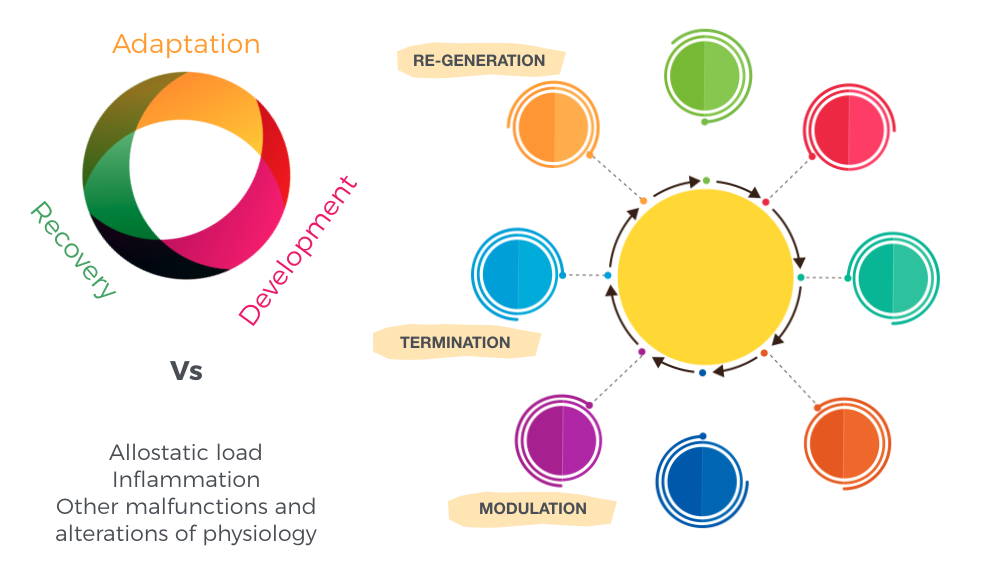
Many people, however, do not reach this stage or are unable to carry it out in a structured or independent way and end up angry and self-commiserating. Our patient for example, found that redefining her objective and the strategy of her behaviour in a more organised way – through Emotion Modulation technique – by developing a repertoire of different behaviours that she could consciously choose, instead of acting on impulse, was effective.
She also found that practising a new parallel motor and emotional schema for interpersonal dynamics as her first non-conscious reaction was very useful.
To achieve this, we used a variation of the Interpersonal Accommodation technique that activates a defence response.

Let us look at a simple example: when two people are talking standing in front of each other and one of them suddenly raises their voice and takes a step forwards, the other involuntarily enacts a schema that changes posture, way of speaking and perception of their role in the situation.
Through the Interpersonal Accommodation technique, we go through various stages. Firstly, we set off this type of reaction and the we ‘neutralise’ it by finding the opposite schema (if the shoulders are raised we lower them, if the speed of talking increases, we slow it down more than normal). We thus stop the patterns from being reconfirmed and strengthened.
We then work on periphery muscular memory with short intense contractions, for example, or with aid of an ice spray such as those you use to treat sport injuries. This way, at the next trigger, the old schema will not find the usual set up of available elements and will be unable to start. The patient is thus obliged to elaborate a new response that is more adequately suited to the context.




